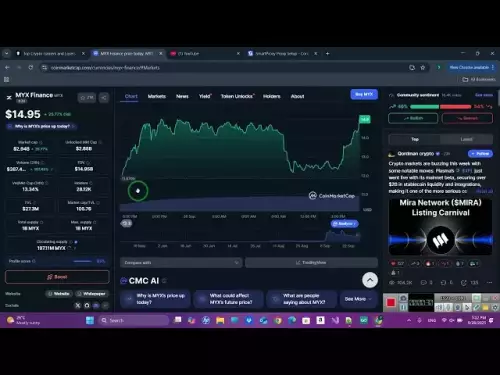-
 bitcoin
bitcoin $109547.008142 USD
0.04% -
 ethereum
ethereum $4011.838726 USD
-0.05% -
 tether
tether $1.000402 USD
-0.01% -
 xrp
xrp $2.798606 USD
0.88% -
 bnb
bnb $970.877944 USD
1.39% -
 solana
solana $202.237275 USD
-0.95% -
 usd-coin
usd-coin $0.999673 USD
0.00% -
 dogecoin
dogecoin $0.229294 USD
-1.15% -
 tron
tron $0.336370 USD
-0.45% -
 cardano
cardano $0.777260 USD
-1.66% -
 hyperliquid
hyperliquid $45.503019 USD
1.73% -
 ethena-usde
ethena-usde $1.000362 USD
0.01% -
 chainlink
chainlink $20.785303 USD
-1.10% -
 avalanche
avalanche $28.755822 USD
-0.11% -
 stellar
stellar $0.358303 USD
-0.48%
How are funding fees calculated on Bybit?
Bybit's funding fees, paid every 8 hours, help align perpetual contract prices with the spot market, with longs paying shorts (or vice versa) based on the funding rate.
Sep 24, 2025 at 05:54 pm
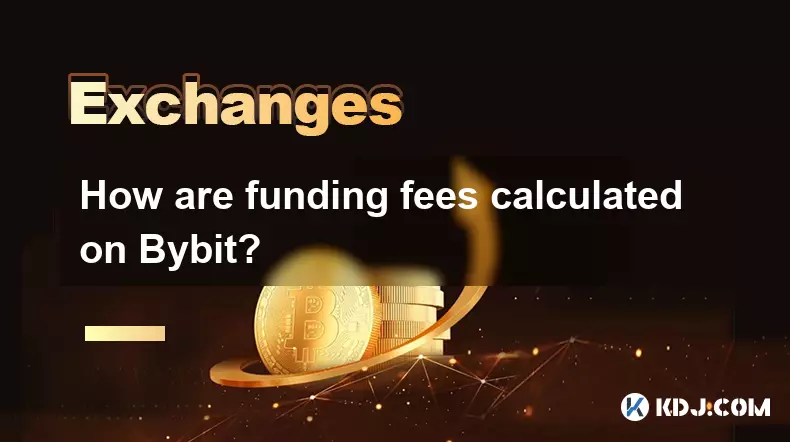
Funding Fees Mechanism on Bybit
1. Funding fees on Bybit are exchanged between long and short position holders to align the perpetual contract price with the underlying asset’s spot price. These fees are applied every eight hours, based on the difference between the perpetual contract market price and the index price.
2. When the funding rate is positive, long position traders pay the fee to short position traders. This typically happens when market demand for long positions is high, pushing the contract price above the index price.
3. Conversely, if the funding rate is negative, short position holders pay longs. This occurs when there is an excess of sell-side pressure, causing the contract price to trade below the index value.
4. The actual funding fee owed is calculated by multiplying the position’s nominal value by the prevailing funding rate. For example, a trader holding a $10,000 long position during a 0.01% funding rate would pay $1 to short holders.
5. Bybit uses a predictive funding mechanism to minimize last-minute trading distortions before funding events. This model estimates the upcoming rate based on current price divergence, helping traders anticipate costs.
Components Influencing Funding Rates
1. The primary driver of funding rates is the premium index, which measures the deviation of the contract price from the underlying index. Larger deviations result in higher absolute funding rates.
2. Interest rate differentials also play a role. Bybit assumes a base interest rate (often near zero), but changes in borrowing costs for the underlying asset can indirectly affect sentiment and positioning.
3. Market volatility increases the likelihood of price divergence, leading to more aggressive funding adjustments. High volatility often correlates with elevated funding rates.
4. Trader positioning imbalance influences funding dynamics. If the majority of open interest is on one side, the minority side receives payments, incentivizing balance.
5. Bybit caps the maximum funding rate at 0.3% per period to prevent extreme fee exposure, protecting traders from excessive charges during volatile conditions.
Practical Implications for Traders
1. Holding positions across funding timestamps results in automatic deduction or receipt of fees. Traders must monitor upcoming funding times—typically at 00:00, 08:00, and 16:00 UTC.
2. Frequent scalpers who open and close positions within the same funding window avoid these fees entirely, making timing crucial for short-term strategies.
3. Large leveraged positions can incur significant cumulative funding costs, especially in strong trending markets where rates remain consistently positive or negative over multiple cycles.
4. Arbitrageurs monitor funding rates closely, entering opposite positions on spot and futures markets when rates become unusually high, profiting from convergence.
5. Negative funding rates can turn into income for long holders, transforming cost into reward under certain market structures, particularly during prolonged bearish sentiment.
Transparency and Fee Adjustments
1. Bybit displays the next estimated funding rate prominently on its interface, allowing traders to make informed decisions before opening or maintaining positions.
2. The platform recalculates the funding rate every minute, using a time-weighted average of the premium index and interest components over the past eight hours.
3. Funding payments are settled directly in the settlement currency of the contract (usually USDT or USD), deducted or credited instantly at the funding timestamp without requiring manual action.
4. Historical funding rates are accessible through the platform’s API and web interface, enabling backtesting and strategy refinement based on past fee cycles.
5. Bybit does not retain any portion of the funding fee; it is transferred directly between users, reinforcing the peer-to-peer nature of the perpetual contract ecosystem.
FAQs
What happens if I close my position before the funding time?You won’t be charged or receive any funding fee if your position is closed before the funding timestamp. Fees only apply to open positions at the exact moment of settlement.
Can funding fees be higher than my maintenance margin?While rare, extremely large positions in volatile markets could see funding fees approach margin thresholds. However, due to the 0.3% cap, such scenarios are mitigated under normal conditions.
Are funding fees taxable events?In many jurisdictions, funding fees are considered income or expense and may be subject to taxation. Traders should consult local regulations and maintain accurate records of all transactions.
Do isolated and cross margin modes affect funding fees?No. Funding fees are calculated based on position size and rate, regardless of margin mode. Both isolated and cross margin users pay or receive the same amount relative to their exposure.
Disclaimer:info@kdj.com
The information provided is not trading advice. kdj.com does not assume any responsibility for any investments made based on the information provided in this article. Cryptocurrencies are highly volatile and it is highly recommended that you invest with caution after thorough research!
If you believe that the content used on this website infringes your copyright, please contact us immediately (info@kdj.com) and we will delete it promptly.
- Digital Asset Treasuries, M&A, and the Crypto Berkshire Hathaway: A New Era
- 2025-09-29 02:25:14
- PEPE Price Prediction: Meme Coin Mania or Fading Fad?
- 2025-09-29 03:05:13
- HBAR, Crypto, Buy Now: Decoding the Hype and Finding the Real Gems
- 2025-09-29 03:05:13
- DeepSnitch AI: Your Crypto Fortune Teller for 2025?
- 2025-09-29 02:25:14
- Investors, Ethereum, and Citigroup: Navigating the Crypto Landscape in 2025
- 2025-09-29 03:18:09
- BlockchainFX, Dogecoin, and Crypto Coins: A New York Minute on the Future
- 2025-09-29 02:30:01
Related knowledge
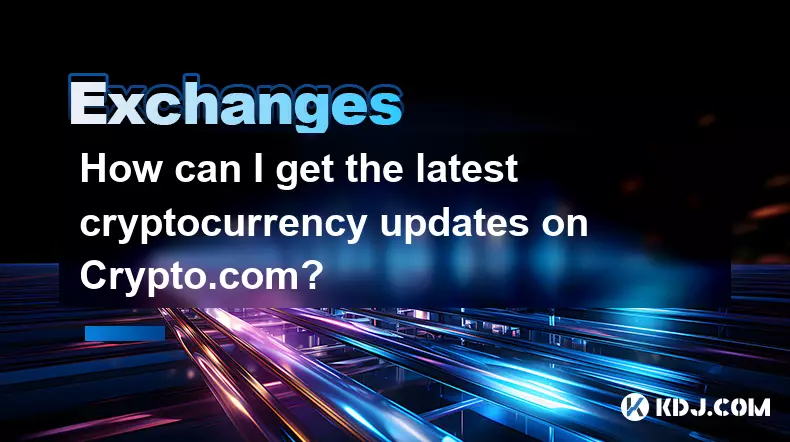
How can I get the latest cryptocurrency updates on Crypto.com?
Sep 26,2025 at 07:54am
Accessing Real-Time Crypto Market Data on Crypto.com1. Navigate to the Crypto.com website or open the mobile application to access live price charts a...
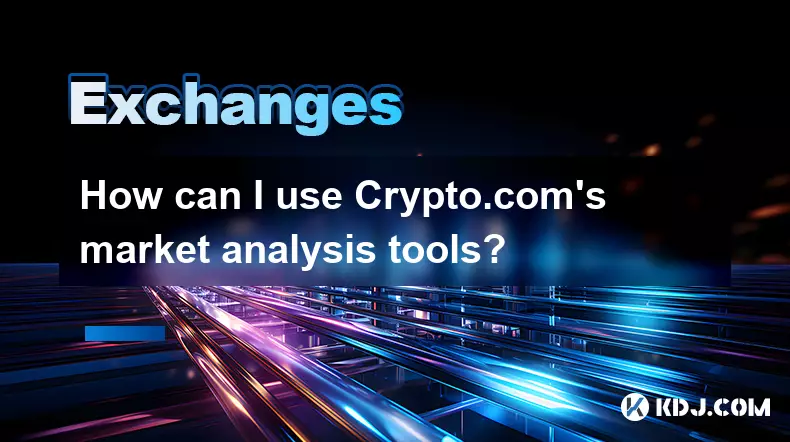
How can I use Crypto.com's market analysis tools?
Sep 23,2025 at 01:54am
Understanding Crypto.com’s Market Analysis Dashboard1. Accessing the market analysis tools begins with logging into your Crypto.com account through th...

Where can I view my Crypto.com asset transfer history?
Sep 27,2025 at 08:54pm
Accessing Your Crypto.com Asset Transfer History1. Log in to your Crypto.com app or web platform using your registered credentials. Once authenticated...

How can I unlink my Crypto.com payment method?
Sep 23,2025 at 12:54am
Understanding Payment Methods on Crypto.com1. Crypto.com allows users to link various payment methods including credit cards, debit cards, and bank ac...

How can I whitelist withdrawal addresses on Crypto.com?
Sep 28,2025 at 03:19pm
Understanding Address Whitelisting on Crypto.comWhitelisting withdrawal addresses on Crypto.com is a security feature designed to protect users from u...
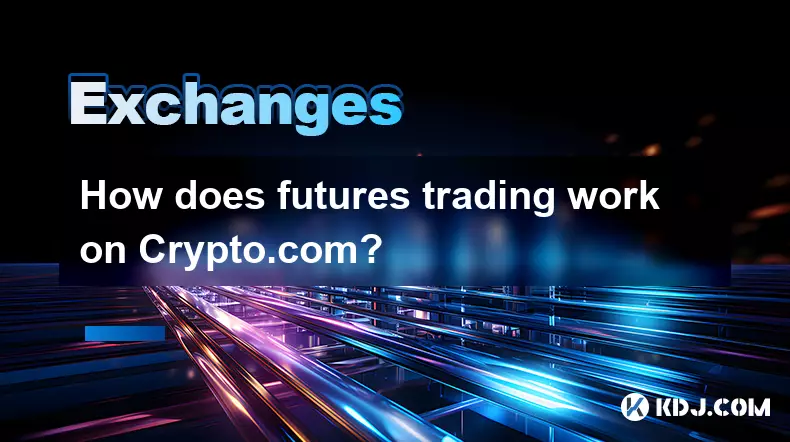
How does futures trading work on Crypto.com?
Sep 27,2025 at 06:37am
Futures Trading Mechanics on Crypto.com1. Futures trading on Crypto.com allows users to speculate on the future price of cryptocurrencies without owni...

How can I get the latest cryptocurrency updates on Crypto.com?
Sep 26,2025 at 07:54am
Accessing Real-Time Crypto Market Data on Crypto.com1. Navigate to the Crypto.com website or open the mobile application to access live price charts a...

How can I use Crypto.com's market analysis tools?
Sep 23,2025 at 01:54am
Understanding Crypto.com’s Market Analysis Dashboard1. Accessing the market analysis tools begins with logging into your Crypto.com account through th...

Where can I view my Crypto.com asset transfer history?
Sep 27,2025 at 08:54pm
Accessing Your Crypto.com Asset Transfer History1. Log in to your Crypto.com app or web platform using your registered credentials. Once authenticated...

How can I unlink my Crypto.com payment method?
Sep 23,2025 at 12:54am
Understanding Payment Methods on Crypto.com1. Crypto.com allows users to link various payment methods including credit cards, debit cards, and bank ac...

How can I whitelist withdrawal addresses on Crypto.com?
Sep 28,2025 at 03:19pm
Understanding Address Whitelisting on Crypto.comWhitelisting withdrawal addresses on Crypto.com is a security feature designed to protect users from u...

How does futures trading work on Crypto.com?
Sep 27,2025 at 06:37am
Futures Trading Mechanics on Crypto.com1. Futures trading on Crypto.com allows users to speculate on the future price of cryptocurrencies without owni...
See all articles






















